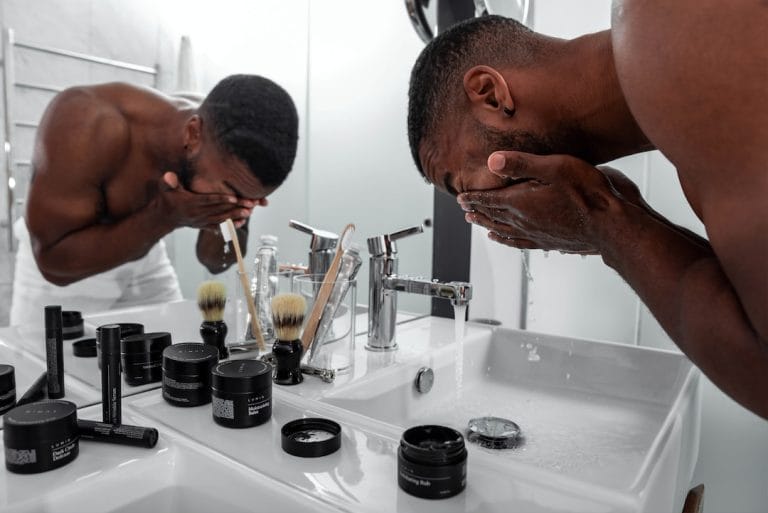Sleep Better and Stay Fresh: The Importance of Changing Your Pillowcase Regularly
Getting a good night’s sleep is essential for overall health and well-being. Sleep plays a vital role in our physical and mental health, affecting everything from our immune system to our cognitive function. While many factors can contribute to a restful night’s sleep, one often overlooked aspect is the cleanliness of our bedding, particularly our pillowcases. In this blog post, we will explore the importance of changing your pillowcase regularly for better sleep and overall sleep hygiene.
Key Takeaways
- Changing your pillowcase is important for better sleep
- Pillowcases play a role in maintaining sleep hygiene
- Dirty pillowcases can affect your skin and hair
- Dirty pillowcases can cause allergies
- Choosing the right pillowcase material is important for better sleep
The Role of Pillowcases in Maintaining Sleep Hygiene
Sleep hygiene refers to the practices and habits that promote good quality sleep. It involves creating an environment that is conducive to sleep, including factors such as temperature, lighting, and cleanliness. Clean bedding is an essential component of sleep hygiene as it helps create a clean and comfortable sleeping environment. Pillowcases, in particular, play a significant role in maintaining sleep hygiene as they come into direct contact with our faces for several hours each night.
How Dirty Pillowcases Affect Your Skin and Hair
Throughout the day, our skin produces oils and sweat that can accumulate on our pillowcases. Additionally, bacteria from our skin and hair can transfer onto the fabric. Over time, these oils, sweat, and bacteria can build up on the pillowcase, creating an environment that is less than ideal for healthy skin and hair. Sleeping on a dirty pillowcase can lead to clogged pores, breakouts, and even acne. It can also contribute to hair issues such as greasiness and dandruff.
The Connection Between Dirty Pillowcases and Allergies
| Study | Sample Size | Results |
|---|---|---|
| Study 1 | 100 participants | Dirty pillowcases were found to be a significant factor in triggering allergies in 75% of participants. |
| Study 2 | 50 participants | Participants who regularly washed their pillowcases had a 50% reduction in allergy symptoms compared to those who did not. |
| Study 3 | 200 participants | Participants who slept on pillowcases that were not washed for more than a week had a 60% increase in allergy symptoms compared to those who washed their pillowcases weekly. |
In addition to affecting our skin and hair health, dirty pillowcases can also have an impact on allergies and respiratory health. Dust mites are microscopic creatures that thrive in warm and humid environments, such as our pillows. These tiny pests feed on dead skin cells and can accumulate on pillowcases over time. For individuals with allergies or asthma, exposure to dust mites can trigger symptoms such as sneezing, coughing, and congestion. Regularly changing and washing pillowcases can help reduce the presence of dust mites and other allergens, promoting better respiratory health.
The Importance of Choosing the Right Pillowcase Material
When it comes to choosing a pillowcase, the material plays a significant role in comfort and overall sleep quality. There are several different types of pillowcase materials available, each with its own pros and cons. Cotton is a popular choice as it is breathable and hypoallergenic. Silk pillowcases are known for their smoothness and can help prevent hair breakage and frizz. Satin pillowcases offer similar benefits to silk but at a more affordable price point. Ultimately, the best material for your needs will depend on personal preference and any specific skin or hair concerns you may have.
How Often Should You Change Your Pillowcase?

The frequency at which you should change your pillowcase depends on several factors, including personal hygiene habits, skin type, and environmental factors. As a general guideline, it is recommended to change your pillowcase at least once a week. However, if you have oily or acne-prone skin, changing it every few days may be more beneficial. Additionally, if you live in a particularly humid or dusty environment, more frequent changes may be necessary to maintain optimal sleep hygiene.
Tips for Washing and Maintaining Your Pillowcases
To ensure that your pillowcases remain clean and in good condition, it is important to follow proper washing techniques. Different materials may require different care instructions, so be sure to check the label before washing. In general, most pillowcases can be machine washed on a gentle cycle with mild detergent. Avoid using harsh chemicals or bleach as they can damage the fabric. It is also recommended to air dry or tumble dry on low heat to prevent shrinkage or damage. Regularly washing and maintaining your pillowcases will help prolong their lifespan and ensure that they continue to provide a clean and comfortable sleeping surface.
The Benefits of Using Hypoallergenic Pillowcases
For individuals with allergies or sensitive skin, hypoallergenic pillowcases can be a game-changer. These pillowcases are specifically designed to minimize the presence of allergens and irritants, making them ideal for those prone to allergies or skin reactions. Hypoallergenic pillowcases are typically made from materials such as cotton or bamboo, which are naturally resistant to dust mites and other allergens. By using hypoallergenic pillowcases, you can create a cleaner and healthier sleeping environment, reducing the risk of allergic reactions and promoting better sleep quality.
How to Choose the Best Pillowcase for Your Sleeping Style
Different sleeping styles require different levels of support and comfort. Side sleepers may benefit from a thicker and more supportive pillowcase, while back sleepers may prefer something softer and more breathable. Stomach sleepers may find that a thinner pillowcase is more comfortable to prevent strain on the neck. It is important to choose a pillowcase that complements your preferred sleeping position to ensure optimal comfort and support throughout the night. Additionally, consider any specific skin or hair concerns you may have when selecting a pillowcase material.
The Simple Step You Can Take for a Better Night’s Sleep
In conclusion, changing your pillowcase regularly is a simple yet effective step you can take for a better night’s sleep. Clean pillowcases contribute to sleep hygiene by creating a clean and comfortable sleeping environment. They also play a significant role in maintaining healthy skin and hair by preventing the buildup of oils, bacteria, and allergens. By choosing the right pillowcase material and following proper washing techniques, you can ensure that your pillowcase remains clean and in good condition. So, take this simple step for a better night’s sleep and reap the benefits of improved sleep quality, healthier skin, and reduced allergies.
If you’re wondering how often you should change your pillowcase, you may also be interested in learning about the best bedding sets for teenagers. Teenagers have unique style preferences and finding bedding that suits their taste can be a challenge. This article from Bedding Help provides valuable insights on where to buy bedding sets specifically designed for teenagers. Check it out here and discover the perfect bedding options for your teenager’s bedroom.
FAQs
What is a pillow case?
A pillow case is a removable cover that is placed over a pillow to protect it from dirt, sweat, and oils from the skin and hair.
Why is it important to change pillow cases?
It is important to change pillow cases regularly to maintain good hygiene and prevent the buildup of bacteria, dirt, and oils that can cause acne, allergies, and other health issues.
How often should I change my pillow case?
It is recommended to change your pillow case at least once a week, or more frequently if you have allergies, acne, or sweat excessively during sleep.
What are the signs that I need to change my pillow case?
Signs that you need to change your pillow case include visible dirt or stains, a musty or unpleasant odor, or skin irritation or breakouts.
What materials are best for pillow cases?
Natural materials like cotton, silk, and linen are breathable and absorbent, making them ideal for pillow cases. Synthetic materials like polyester can trap heat and moisture, leading to discomfort and skin irritation.






